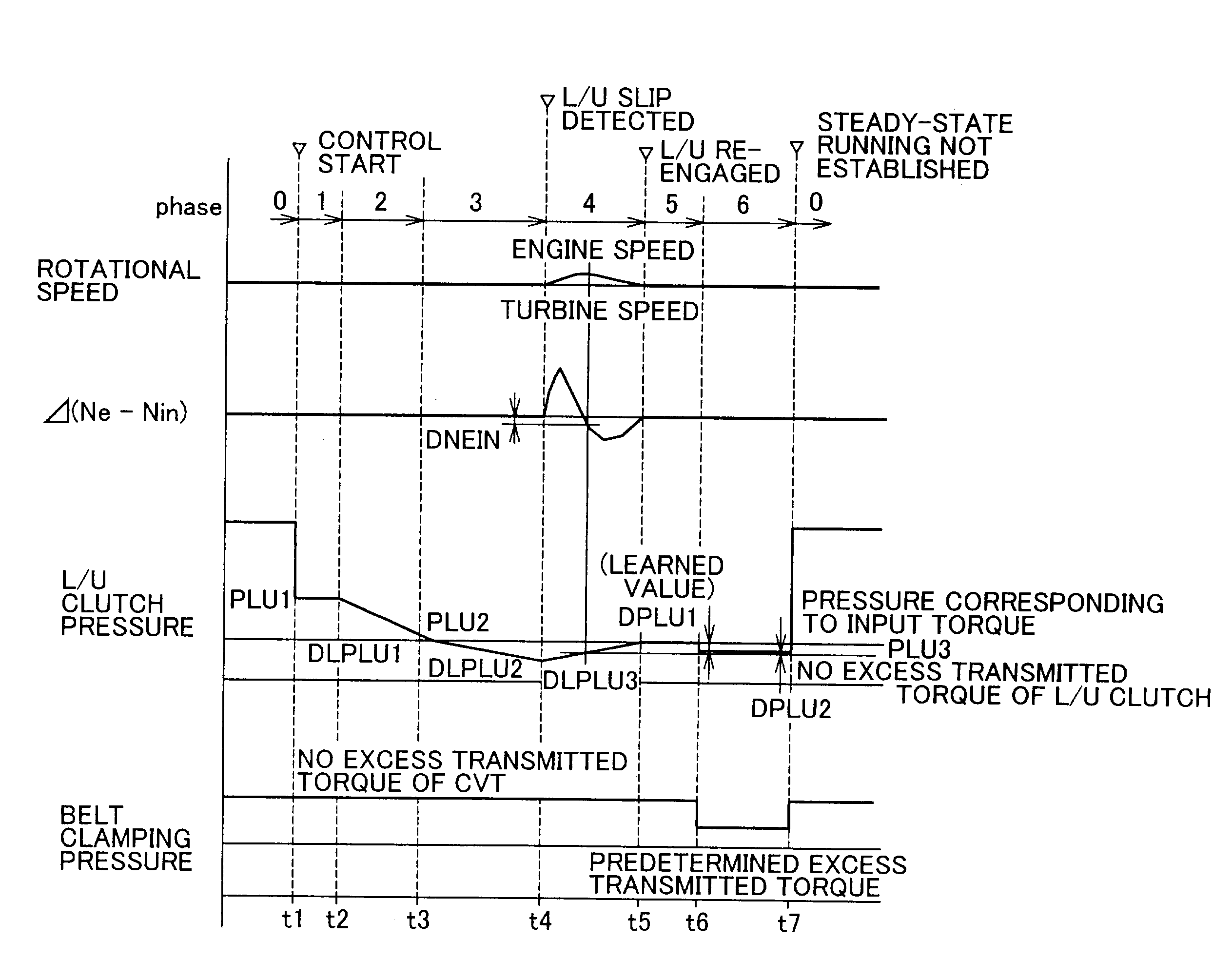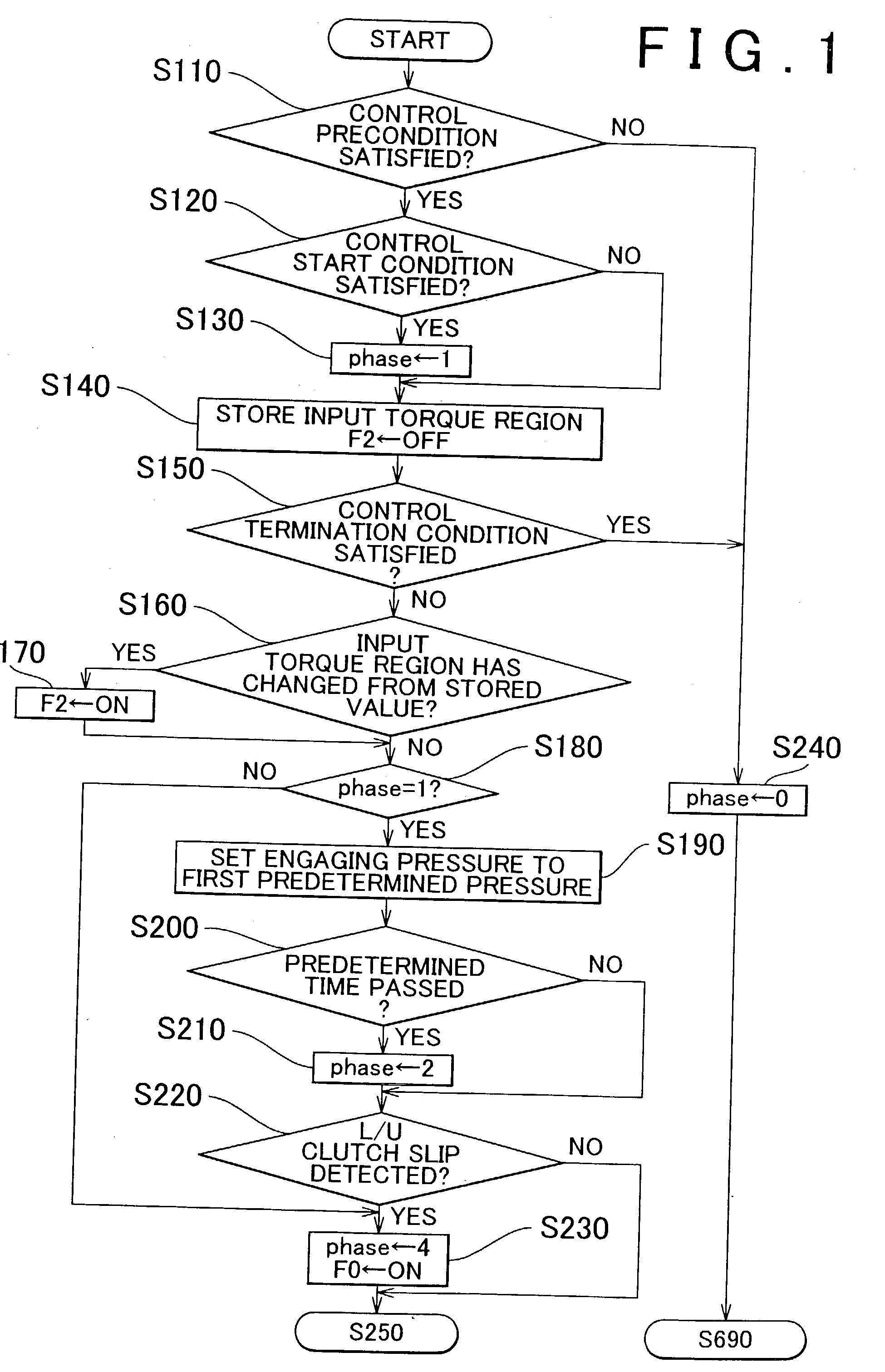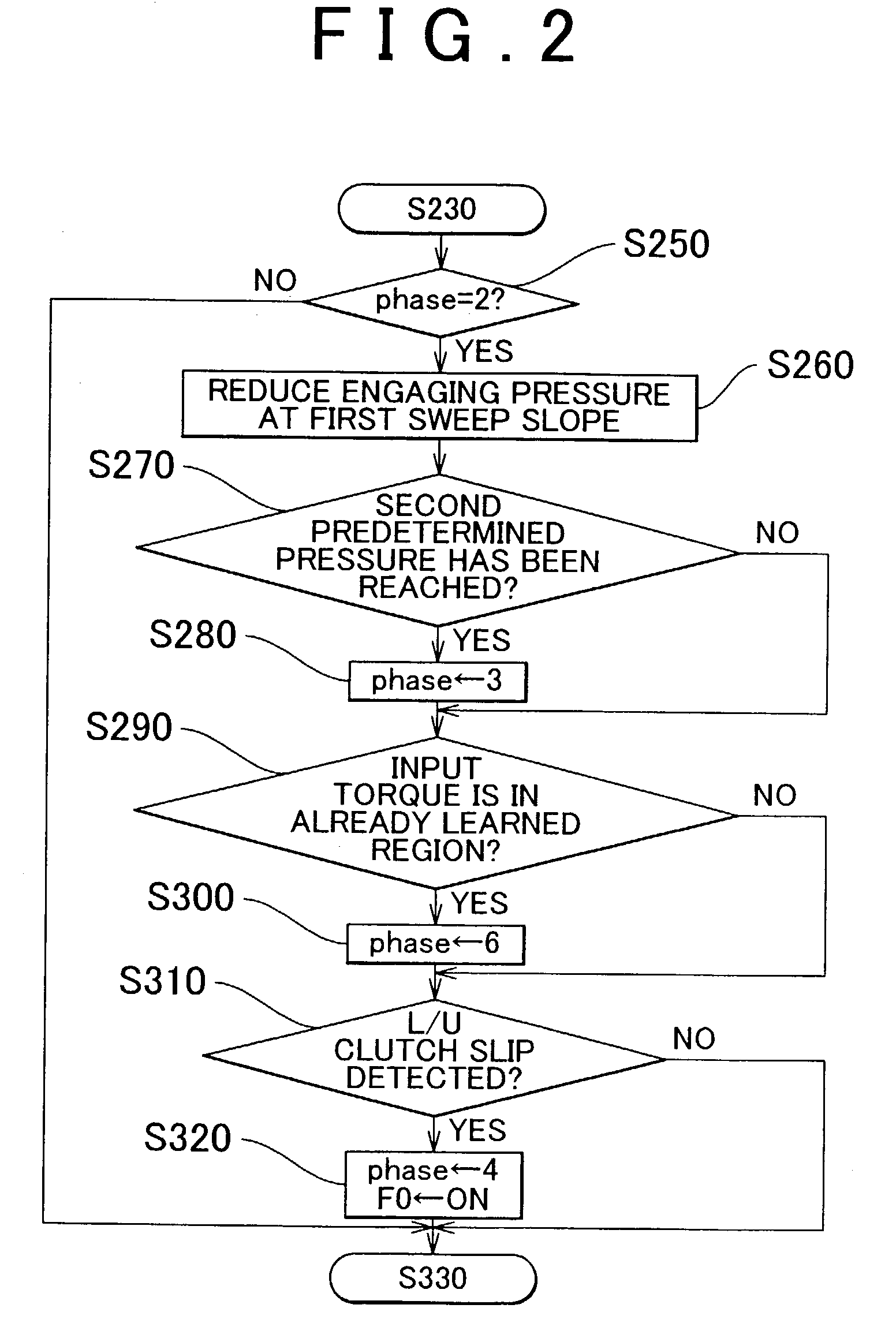Control apparatus for power train including continuously variable transmission
a technology of control apparatus and transmission device, which is applied in the direction of mechanical actuated clutches, couplings, couplings, etc., can solve the problems of belt or power roller slipping, wear of the portion of the pulley or disc that is in contact with the belt or power roller, and the cvt will not be able to perform the intended function of transmitting power at a given speed ratio
- Summary
- Abstract
- Description
- Claims
- Application Information
AI Technical Summary
Benefits of technology
Problems solved by technology
Method used
Image
Examples
Embodiment Construction
[0090] Some exemplary embodiments of the invention will be described in detail. Initially, a power train including a continuously variable transmission, which employs a control apparatus according to the invention, will be explained. The continuously variable transmission of the power train installed on a vehicle may be a belt-and-pulley type continuously variable transmission using a belt as a torque transmitting member, or may be a toroidal-type (or traction-type) continuously variable transmission using a power roller as a torque transmitting member and utilizing shearing force of oil (traction oil) for transmitting torque. FIG. 23 schematically shows one example of a vehicle power train including a belt-and-pulley type continuously variable transmission 1 (which will be referred to as "CVT" when appropriate). As shown in FIG. 23, the CVT 1 is operatively connected to a driving power source 4 via a forward / reverse drive switching mechanism 2 and a torque converter 3.
[0091] The dr...
PUM
 Login to View More
Login to View More Abstract
Description
Claims
Application Information
 Login to View More
Login to View More - R&D
- Intellectual Property
- Life Sciences
- Materials
- Tech Scout
- Unparalleled Data Quality
- Higher Quality Content
- 60% Fewer Hallucinations
Browse by: Latest US Patents, China's latest patents, Technical Efficacy Thesaurus, Application Domain, Technology Topic, Popular Technical Reports.
© 2025 PatSnap. All rights reserved.Legal|Privacy policy|Modern Slavery Act Transparency Statement|Sitemap|About US| Contact US: help@patsnap.com



